Compact camera vs DSLR vs mirrorless | What is best for stop motion?
If you’re looking for a great camera to make stop motion videos, you have a lot of choices. But which one should you choose?
Compact cameras, DSLRs, and mirrorless are three popular types of cameras used for stop motion. Each camera system comes with pros and cons.
Compact cameras are great for beginners, but they don’t always have the features you need to make professional-quality stop motion videos.
DSLRs are more powerful, but they can be more difficult to use.
Newer mirrorless cameras are a type of camera that offers the best of both worlds, but they can be expensive.
So, which is the best type of camera for stop motion? It depends on your needs and budget.
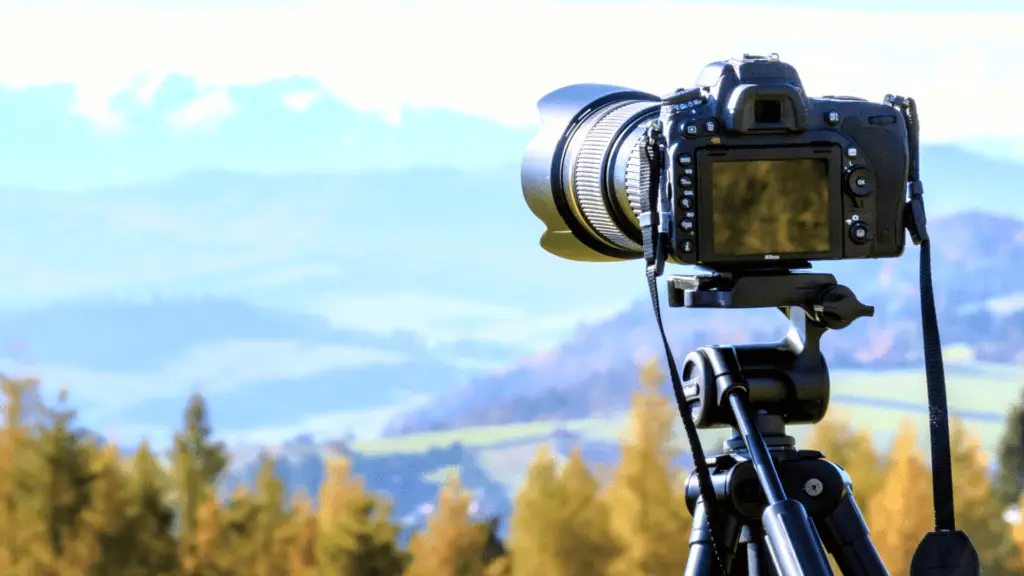
For high-quality stop motion animations, a mirrorless camera like the Canon EOS R is the best modern camera with all the features you need. This camera is more compact and offers better image stabilization to reduce blurriness.
If you’re just starting out, a compact camera may be all you need.
But if you’re serious about making high-quality stop motion videos, a DSLR or mirrorless camera is a better choice.
Let’s take a look at the 3 different cameras you can use for stop motion: compact cameras, DSLR cameras, and mirrorless cameras, and the benefits and drawbacks of each.
Getting started with your own stop motion storyboards
Subscribe to our newsletter and get your free download with three storyboards. Get started with bringing your stories alive!
We'll only use your email address for our newsletter and respect your privacy
| Comparing cameras for stop motion | Images |
| Best mirrorless camera for stop motion: Canon EOS R Mirrorless Full Frame | 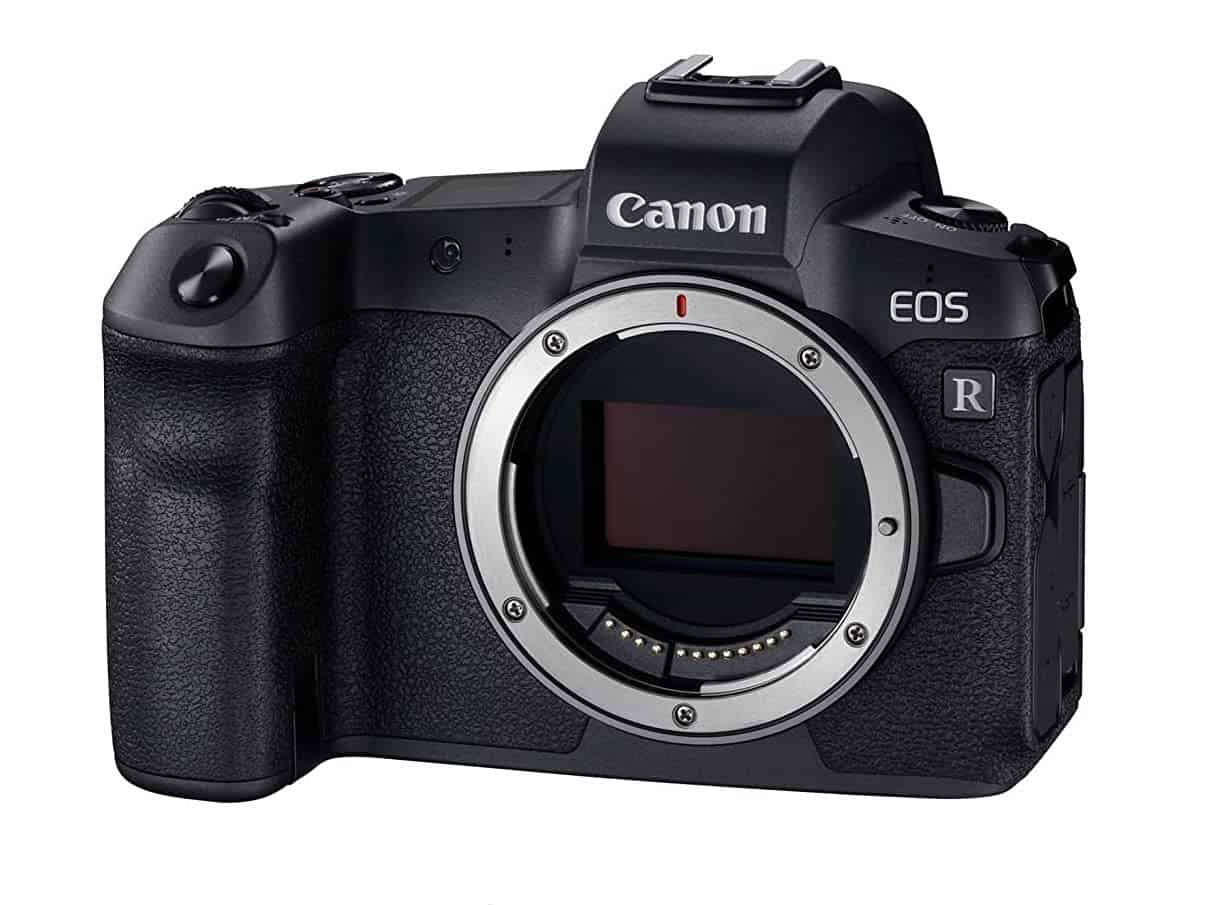 (view more images) |
| Best DSLR camera for stop motion: Canon EOS 5D Mark IV Full Frame Digital SLR | 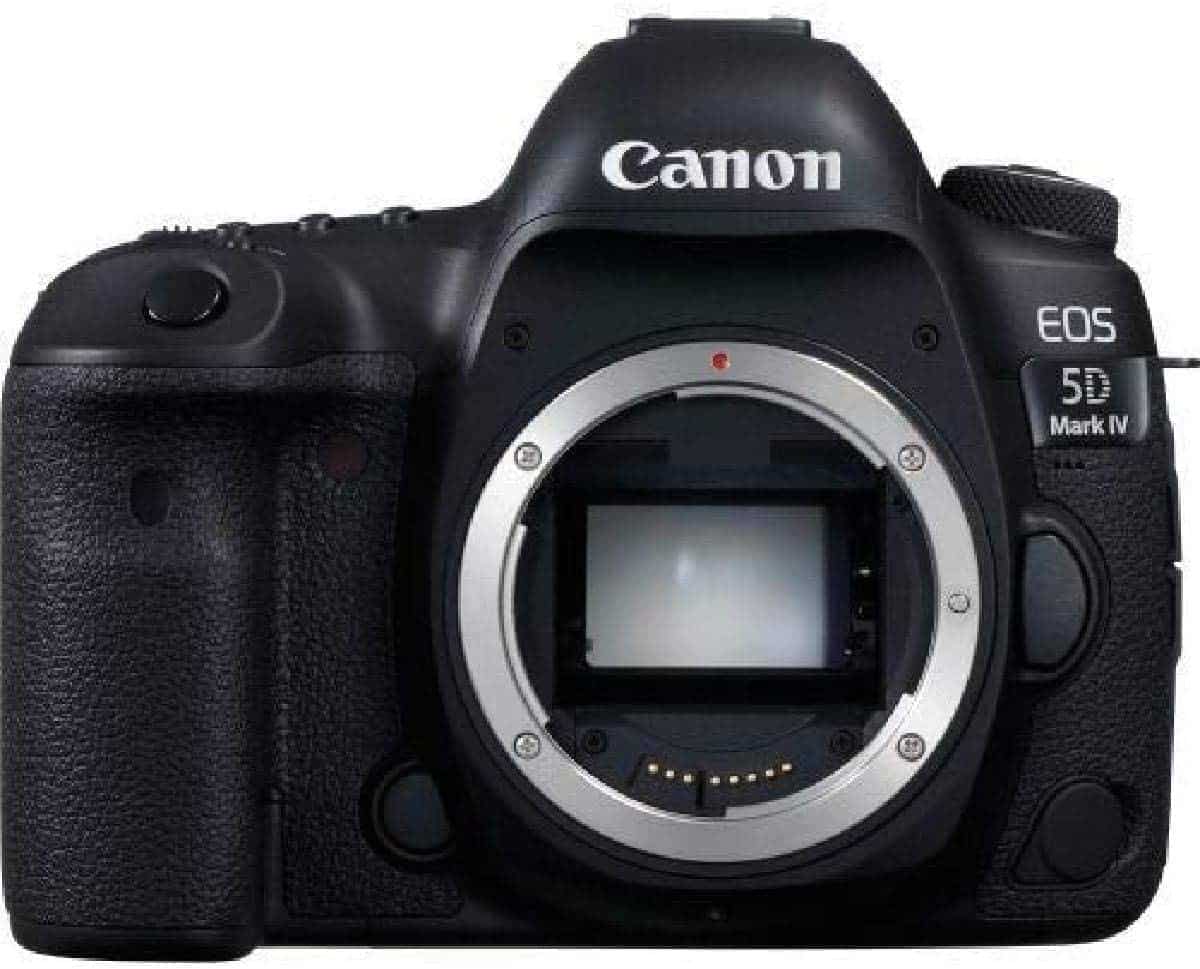 (view more images) |
| Best basic compact camera for stop motion: Sony DSCWX350 18 MP Digital | 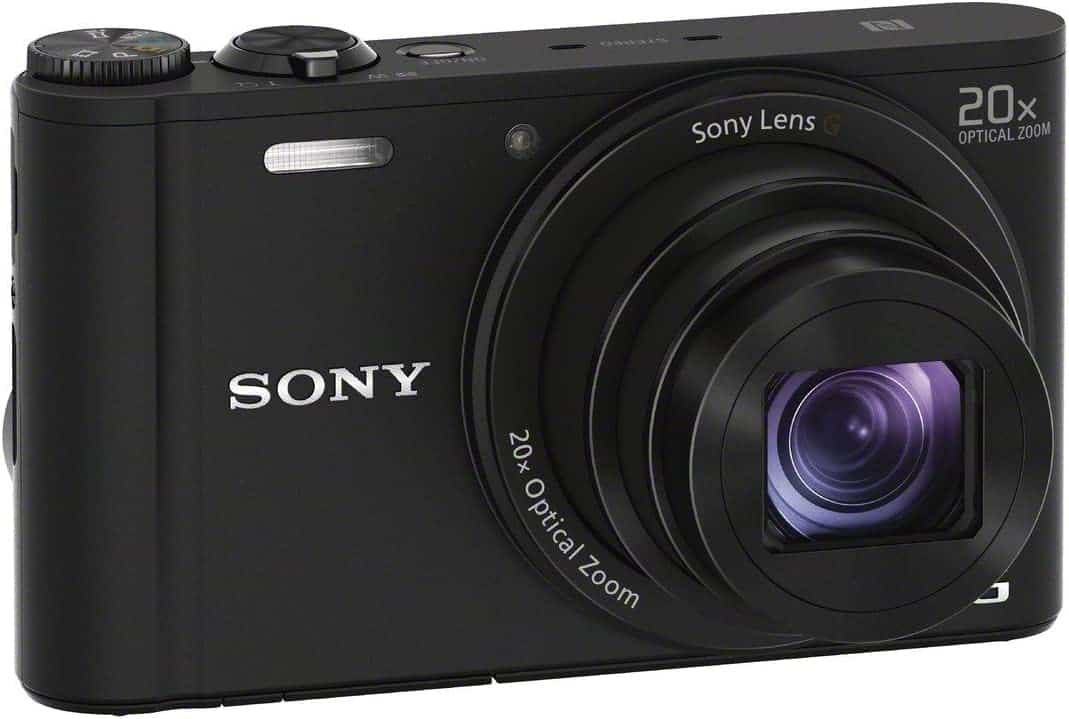 (view more images) |
In this post we'll cover:
Buyer’s guide
Now you’re probably wondering what to look for when buying a stop motion camera:
Camera type
The first thing you need to consider is the type of camera. As we’ve seen, there are three main types of cameras: DSLR, mirrorless, and compact.
Full frame mirrorless cameras offer the best image quality, but they’re also the most expensive.
If you’re on a budget, there are many great options for APS-C and micro four-thirds mirrorless cameras that will still give you great results.
Each type of camera has its own advantages and disadvantages. It’s important to choose the right type of camera for your needs.
Image quality
Another important factor to consider is the image quality. As we’ve seen, compact cameras have lower image quality than DSLR or mirrorless cameras.
However, this might not be a big deal if you’re just starting out with stop motion. You can always upgrade to a better camera later on.
Image sensor size
The image sensor size is another factor to consider. As we’ve seen, compact cameras have smaller sensors than DSLR or mirrorless cameras.
This can impact the image quality, so it’s something to keep in mind.
Megapixels
The megapixel count is another factor to consider. As we’ve seen, compact cameras have lower megapixel counts than DSLR or mirrorless cameras.
The higher the mp count, the more detail your images will have.
However, the megapixel count is not as important as the other factors we’ve discussed.
Optical viewfinder
If you want to be able to see what you’re shooting, you’ll need a camera with an optical viewfinder. This is only available on DSLR and mirrorless cameras.
Compact cameras don’t have an optical viewfinder, which means you’ll have to rely on the LCD screen.
When people compare mirrorless vs dslr cameras, they examine the optical viewfinder as one of the key features.
The size and quality of the optical viewfinder is an important factor to consider.
Autofocus
Mirrorless autofocus systems are generally better for stop motion than DSLR autofocus systems. This is because they’re more accurate and can focus on a moving subject more easily.
However, not all mirrorless cameras have great autofocus. So, it’s important to do your research before buying a camera.
You don’t even need autofocus for stop motion, some people prefer to focus manually. Therefore, you can use compact cameras for stop motion with good results.
The mirrorless systems have this extra feature and some users love it while others don’t use it as much when making stop motion videos.
The dslr system is also known for phase detection autofocus (AF), this is a great system that tracks the movement of your subject.
Phase detection sensors are used to better focus on your subject.
Is it a must-have for stop motion and claymation? NO! But, if you want to do professional photography with your dslr, you might want this feature.
Controls
You also need to consider the controls of the camera.
As we’ve seen, compact cameras have automatic settings, which means you won’t have as much control over the camera.
However, this might not be a big deal if you’re just starting out with stop motion or you like simple systems.
The latest mirrorless cameras have touch screens that can be very useful for stop motion. You can use them to set the focus point and trigger the shutter.
Some DSLR cameras also have touch screens, but they’re not as common.
Electronic viewfinder
An electronic viewfinder can be helpful for stop motion because you can see the image clearly without having to hold the camera up to your eye.
However, not all cameras have an electronic viewfinder. So, it’s important to check before you buy.
Electronic viewfinders are popular in mirrorless cameras, but they’re also available in some DSLR cameras.
Electronic shutter
Another factor to consider is the electronic shutter. This is a feature that’s found on mirrorless and some DSLR cameras.
When comparing mirrorless vs dslr, the electronic shutter is a big advantage of mirrorless cameras.
This is because it’s completely silent, which can be helpful when shooting stop motion.
Brands
There are some excellent camera manufacturers out there to buy from. These include:
- Canon
- Nikon
- Sony
- Fujifilm
- Olympus
- Panasonic
- Pentax
- Leica
Compatibility
Another factor to consider is compatibility. When you’re choosing a camera, you need to make sure it’s compatible with the software you want to use.
For example, if you want to use Adobe Premiere Pro, you’ll need a camera that’s compatible with that software.
Also, it must have a USB port so you can connect it to your computer or wireless and Bluetooth so you can connect it to your smartphone, tablet, and computer.
When it comes to compact cameras, most of them are compatible with different software. However, it’s important to check before you buy.
When it comes to DSLR and mirrorless cameras, there are some that are only compatible with specific software.
Camera body
Finally, consider the camera body. As we’ve seen, DSLR and mirrorless cameras come in different sizes.
Compact cameras are usually smaller, but not always. The material used to make the body is also important.
Some people prefer metal bodies because they’re more durable. However, plastic bodies are often lighter and cheaper.
Price
Of course, price is always a factor to consider when buying a camera.
Compact cameras are usually the cheapest option, followed by DSLRs and mirrorless cameras.
However, there are some great deals to be found on all types of cameras. So, it’s important to shop around and compare prices before you buy.
Camera manufacturers charge different prices depending on things like lens quality, sensor size, and features.
DSLR cameras are often more expensive than mirrorless cameras with the same features. This is because DSLRs have been around longer and they’re more popular.
However, mirrorless cameras are becoming more popular and their prices are dropping.
Best cameras reviewed: mirrorless vs dsrl vs compact
Here, I’m reviewing the top cameras to use for stop motion animation.
Best mirrorless: Canon EOS R Mirrorless Full Frame Camera
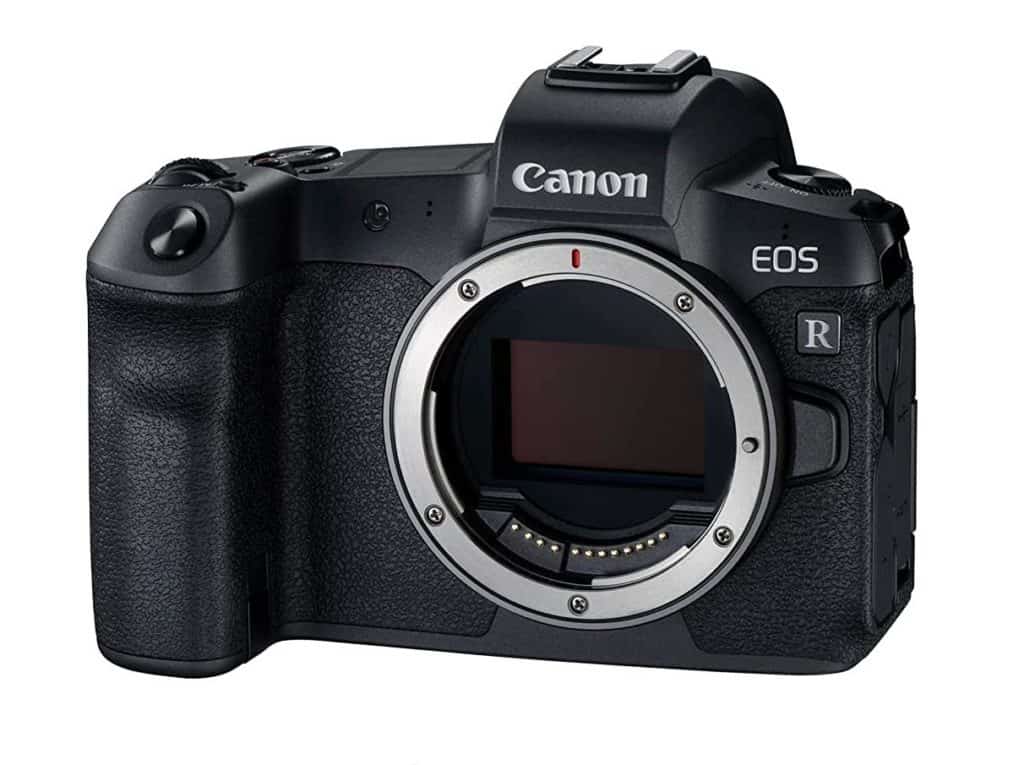
- size: 3.3 x 5.3 x 3.9 inches
- viewfinder: full HD Live viewfinder which works with stop motion firmware
- MP: 30.3
- touchscreen: vary angle
- autofocus: yes
- image sensor: full-frame
- 1.4 fps shooting speed
One of the cameras that is most well suited for stop motion animation is definitely the Canon EOS R because of its size, weight, and autofocus.
The autofocus on this camera is great for keeping your shots in focus while you’re moving the camera around to get different angles.
The camera’s autofocus can work in as low as -6EV if customers need it, and the rear screen has vari-angle for simpler compositions without an extra monitor.
This vari-angle touchscreen is also helpful for getting those tricky shots where you need to be in the frame.
Its full-frame sensor offers a good dynamic range. The 30.3 megapixels mean that your images will be large, detailed, and clear – perfect for a professional stop motion film.
You can also shoot in 4K which is great for creating stunning stop motion animations.
The only downside to this camera is that it’s quite expensive. But, if you’re serious about stop motion animation, it’s definitely worth the investment.
To aid in the integration between the camera and computer, stop motion firmware is provided, which raises the live view resolution to 1920 x 1280.
It should be mentioned that when this firmware is active, the HDMI output stops functioning, therefore you will need to use the computer itself for your creation and live view.
However when the firmware is installed, focus position memory is enabled when using any RF lens, and also provides manual focus peaking via USB.
Some users noted that it’s a bit tricky to get the hang of the firmware and you need to play around with the settings.
Stop motion software can also be used to regulate focus and aperture lock, preventing compositional errors from operating the camera while shooting.
You can add mirrorless lenses to the EOS R, and this would be a great option for better quality stop motion.
Another thing to note is that this camera has a very long battery life so you can shoot hundreds of frames (even up to 900) on a full battery.
Best DSLR: Canon EOS 5D Mark IV Full Frame Digital SLR Camera Body
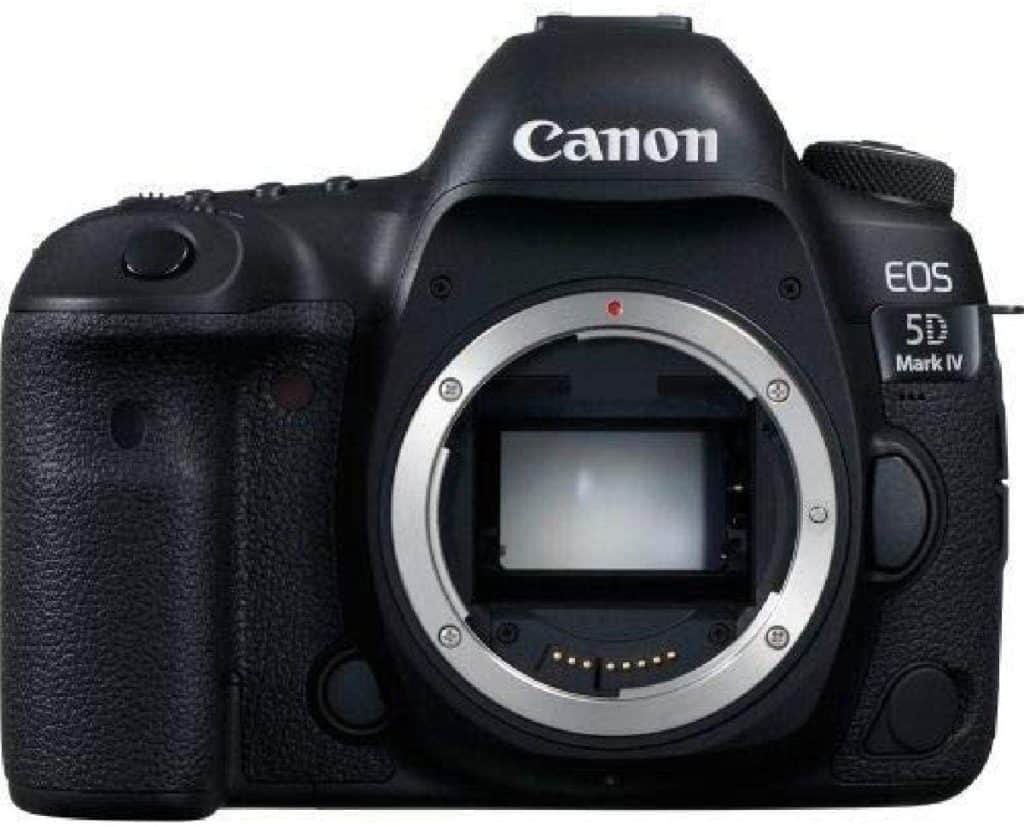
- size: 3 x 5.9 x 4.6 inches
- viewfinder: optical
- MP: 30.4
- touchscreen: yes, LCD
- autofocus: yes
- image sensor: full-frame
- 7.0 fps continuous shooting speed
If you’re looking for a camera that captures crystal clear images for your stop motion animation, the Canon EOS 5D is a great option.
It’s used by professional photographers to capture sports and wildlife stills so you can bet that it works well to capture your stop motion action shots too.
The camera’s 30.4-megapixel full-frame sensor is perfect for getting those detailed shots. The large sensor also allows you to shoot in low light conditions without losing quality.
You can also shoot in 4K which is great for creating stunning stop motion animations with studio-like quality.
This Canon model is a top-tier full-frame DSLR camera because of its outstanding image quality, reliable and ergonomic design, and good 4K video recording capability.
Its autofocus technology does a respectable job of being consistent and effective in photos.
Thus, it makes your life easier because you don’t need to keep refocusing manually while capturing hundreds or thousands of images.
Unfortunately, the fixed screen on this camera makes it difficult to take videos of yourself or while shooting from unusual angles.
It is also very heavy and big so those who don’t like bulky cameras might want to size down to a compact.
The strengths of this camera are the way that it performs even with high ISO levels. It takes really great photos with a high dynamic range.
It’s also great for rendering your stop motion puppets with excellent color accuracy.
Therefore, if you have very detailed puppets and figurines, you’ll appreciate the accurate color rendering of this camera.
The controls are pretty straightforward and easy to use after a bit of practice. That’s why many people prefer this camera for stop motion over some Nikon models.
Overall, the Canon EOS 5D Mark IV is a great option for those who want a full-frame DSLR camera that produces excellent image quality.
Best compact camera: Sony DSCWX350 18 MP Digital Camera
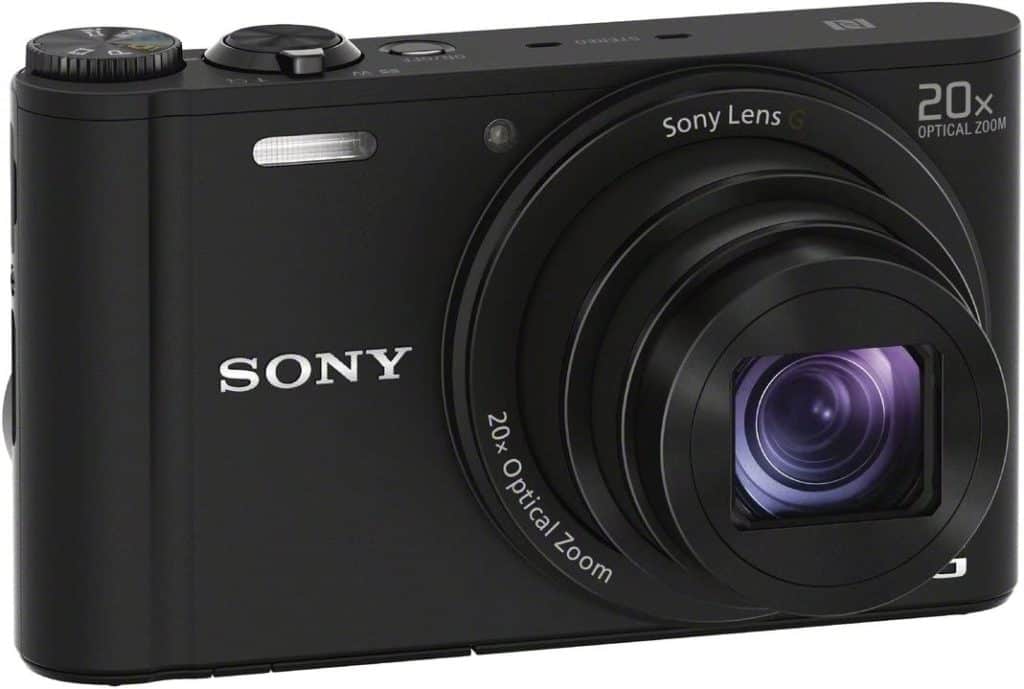
- size: 3.78 x 1.01 x 2.16 inches
- viewfinder: no
- MP: 18.2
- touchscreen: no
- autofocus: no
- image sensor: Exmor R CMOS sensor
Using a compact camera for stop motion animation can be limiting but this Sony device lets you take photos remotely from a smartphone and this feature is fantastic for stop motion photography.
Since it has WIFI and NFC connectivity, you can easily connect this camera to your smartphone.
If you use an iPhone, you can even download the Sony Play Memories app which lets you use your phone as a remote to take photos.
You can also use the app to change settings on the camera like aperture, shutter speed, and ISO.
This is a great feature for those who want to be in control of their stop motion animation without being tied down to the camera.
The camera is also very lightweight and easy to carry around.
It’s the perfect camera for amateur animators and beginners looking to perfect their photography skills for stop motion.
The Sony DSCWX350 is an 18.2-megapixel digital camera that is able to record full HD 1080p video.
It has a Zeiss Vario-Sonnar T* lens with 30x optical zoom, and Optical SteadyShot image stabilization to reduce blur.
The camera is also equipped with NFC (near field communication) technology, which allows for easy Wi-Fi connectivity with compatible devices.
The DSCWX350 also has a wide variety of shooting modes, including panorama, portrait, landscape, sports action, and night scene.
It also has a variety of picture effects, such as toy camera, partial color, and HDR painting.
The camera also has a 3-inch LCD screen for easy composition and playback of your images and videos.
When using this digital camera for stop motion animation, it is recommended to use a tripod to keep the camera steady.
The DSCWX350 also has a built-in interval timer, which can be used to take a series of photos at set intervals.
This is perfect for creating time-lapse videos or stop motion animation.
The downside of using this camera is that it doesn’t have a viewfinder, and the image quality is not comparable to the Canon mirrorless and DSLR.
However, it can do a great job and is also a good teaching camera for stop motion animation students.
Canon EOS R mirrorless vs Canon EOS 5D Mark IV DSRL vs Sony DSCWX350 compact
Ok, these cameras are quite different from each other but there are some key things to consider when choosing a camera for stop motion animation.
Size and weight are important factors to consider, especially if you’ll be carrying the camera around a lot.
The Sony is the smallest and lightest camera of the three, making it the most portable.
The Canon EOS R is a mirrorless camera, which means it’s lighter and smaller than a DSLR, but it still has a large sensor.
The Canon EOS 5D Mark IV is a DSLR camera with a full-frame sensor. It’s the largest and heaviest camera of the three, but it offers the best image quality.
Next, consider the viewfinders and touchscreen controls of both mirrorless and DSLR cameras.
The Sony compact lacks a viewfinder, which can make it difficult to compose your shots for animation.
The Canon EOS R has a vari-angle LCD touchscreen that’s great for composing shots and reviewing footage.
The Canon EOS 5D Mark IV has a fixed LCD screen and an optical viewfinder.
The Canon EOS R IV is the best camera for stop motion animation if you’re looking for the best and are willing to spend money on a reliable camera.
Professionals may also consider the EOS 5D as the best, especially for its image quality and the fact that it lets you control settings manually.
Mirrorless cameras
Mirrorless cameras are a newer type of camera that offers the best of both worlds: they’re small and lightweight like compact cameras, but they offer the high image quality of DSLRs.
A mirrorless camera operates without a reflex mirror. The LCD screen of the camera displays your image once the light from the lens reaches the digital sensor.
This lets you preview and change settings before taking the picture. This feature is extremely helpful for stop motion animation because you can see exactly what your shot will look like and make changes if needed.
Mirrorless cameras have all the features you need to create high-quality stop motion videos, such as manual controls and the ability to change lenses.
They also have large image sensors and offer excellent image quality.
However, mirrorless cameras can be expensive. And like DSLRs, they can be more difficult to use than compact cameras.
Main advantages of mirrorless cameras
There are many features that make mirrorless cameras excellent for making stop motion videos.
Weight and size
Mirrorless cameras are generally smaller and lighter than DSLRs and about the same size as compact cameras.
This portability makes it easier to take photos for your animation and it also means you can use a smaller tripod and fit it into tighter spaces at home.
Electronic viewfinder
The Electronic viewfinder (EVF) is a key feature of mirrorless cameras. It lets you see what your image will look like before taking the photo.
This is extremely helpful because you see the image preview on the camera’s LCD screen.
All modern mirrorless cameras have this feature and this allows you to adjust the photo’s settings.
Therefore, this mirrorless system let’s you tweak the brightness, exposure, contrast, saturation, etc so your photos look just the way you want them to.
It’s also helpful for taking stop motion videos because you can see if something is out of place and fix it before taking the picture.
No mirror
The absence of a reflex mirror in a mirrorless camera makes it smaller and lighter. It also means that the sensor is exposed to the light all the time, which has some advantages.
First, it means that mirrorless cameras have shorter shutter lag times. This is the delay between when you press the shutter button and when the photo is actually taken.
Second, it lets you use the live view feature, which is essential for stop motion animation.
Third, it means that mirrorless cameras can have silent shutters. This is extremely helpful if you’re shooting in a quiet environment or trying to avoid attracting attention.
Image stabilization
All mirrorless cameras have image stabilization (IS), which is a feature that reduces blur in your photos.
Image stabilization is key for stop motion because it allows you to take sharp pictures without blurring.
Some mirrorless cameras have in-body image stabilization, which means that the sensor is stabilized. Others have lens-based image stabilization, which means that the lens is stabilized.
In-body image stabilization is generally better because it’s not affected by lens changes.
However, lens-based image stabilization is still helpful and it’s often found in cheaper mirrorless cameras.
Thus, most mirrorless cameras will help you take clearer images and reduce shakiness.
Main disadvantages of mirrorless cameras
Some factors make them less attractive perhaps.
Price
Mirrorless cameras are generally more expensive than compact cameras and some older DSLRs. This is because they’re a newer technology and they offer more features.
However, there are some affordable mirrorless cameras on the market, such as the Canon EOS M50 and the Fujifilm X-A5.
Not as many lenses
It’s also important to note that mirrorless cameras often come with a kit lens, which is a basic zoom lens.
If you want to shoot stop motion animation, you’ll need a better lens. And lenses can be expensive.
For example, the Canon EF-M 22mm f/2 STM lens costs about $200. The Sony E 10-18mm f/4 OSS lens costs about $900.
So, if you’re on a budget, you may want to stick with a compact camera or DSLR instead of the mirrorless system.
DSLR cameras
For the sharpest and clearest image resolution, the DSLR is the way to go. It’s what most professionals use.
But, it is significantly larger and more expensive than the other types of cameras.
A DSLR (digital single-lens reflex) camera is a good choice if you’re serious about making high-quality stop motion videos.
These cameras are rather big and bulky but they’re used by professionals because they offer excellent image quality.
DSLR cameras have large image sensors that produce high-quality images.
They also have a variety of features that can be useful for stop motion, such as manual controls and the ability to change lenses.
However, DSLR cameras can be more difficult to use than compact cameras. They also tend to be more expensive.
Dslr systems are popular with stop motion animators because they offer excellent image quality, a wide range of lenses, and manual controls.
Main advantages of DSLR camera
Let’s look at what makes DSLR cameras stand out from the crowd.
Image quality
DSLR cameras have large image sensors that produce high-quality images. This is the main reason why they’re so popular with professionals.
A DSLR will give you the clearest and sharpest image resolution. If you’re serious about making high-quality stop motion videos, a DSLR is the way to go.
Variety of lenses
DSLR cameras also have a wide range of lenses available. This gives you a lot of flexibility when it comes to shooting stop motion.
For example, you can get a wide-angle lens for shooting large sets or a macro lens for close-up shots.
Manual controls
DSLR cameras often have manual controls, which can be helpful for stop motion.
Manual controls give you more control over the camera and allow you to change settings like shutter speed, aperture, and ISO.
This can be helpful for getting the perfect shot.
Be prepared to get fantastic image quality with a DSLR, especially compared to regular compact digital cameras.
Battery life
DSLR cameras often have better battery life than compact cameras. This is because they have larger batteries.
This can be helpful when you’re shooting stop motion, as you won’t have to worry about changing batteries as often.
Extra features
DSLR cameras often come with extra features that can be helpful for stop motion, such as intervalometers and remote controls (check out these stop motion options).
An intervalometer is a device that allows you to take shots at regular intervals. This can be helpful for shooting time-lapse or slow-motion sequences.
Many also have electronic viewfinders, which can be helpful for previewing your shots.
Phase detection autofocus
DSLR cameras often have phase detection autofocus, which is helpful for shooting moving objects.
This type of autofocus is helpful for making sure your shots are in focus, even if the object is moving.
Disadvantages of DSLR camera
There are also some less positive characteristics of DSLR cameras that you need to consider.
Size
The main disadvantages of DSLR cameras are their size and weight. These cameras are large and bulky, which can be difficult to work with when shooting stop motion animation.
You need more space to set up a Nikon DSLR for example with the tripod, lighting, and other equipment.
Price
High-end DSLR cameras with a full setup can cost upwards of $5000. This is a big investment and not something everyone can afford.
Lenses
Another disadvantage of DSLR cameras is that they require you to buy separate lenses.
This can be expensive, especially if you want a variety of different lenses to use with your camera.
Generally, dslr lenses are pricey. For example, the Canon EF 50mm f/1.8 STM lens costs about $125. The Canon EF 24-105mm f/4L IS II USM lens costs about $1100.
Compact camera
For beginners in stop motion, the compact camera is the most budget-friendly option and it can still produce great results.
If you’re just getting started with stop motion, a compact camera may be all you need.
Compact cameras are small and lightweight, making them easy to carry around. They’re also relatively inexpensive.
Some compact cameras have features that make them ideal for stop motion animation, such as interval recording and time-lapse modes.
However, compact cameras generally have lower image quality than DSLR or mirrorless cameras. They also have smaller sensors, which can make it difficult to get a sharp image.
Although a compact camera has all kinds of camera settings, many of them are automatic (here’s how to set them naually for stop motion).
This means you won’t have as much control over the camera as you would with a DSLR or mirrorless camera.
Main advantages of a compact camera
Some features make a compact camera an ideal tool for stop motion animation.
Price
One of the main advantages of a compact camera is the price. Modern digital cameras are relatively inexpensive, making them a good option for people on a budget.
Size and weight
Another advantage of a compact camera is the size and weight. These cameras are small and light, making them easy to carry around.
This can be helpful when you’re shooting stop motion, as you won’t have to worry about lugging around a heavy camera.
Easy to use
Compact cameras are generally very easy to use. This is because they have automatic settings that make it easy to take a picture.
This can be helpful for people who are new to stop motion or photography in general.
This type of camera is also perfect for kids who want to try stop motion.
Some compact cameras even have special modes that are designed for stop motion animation.
Wondering how a compact camera compares to a GoPro for stop motion?
The camera shutter release button
The camera shutter release button is another advantage of a compact camera. This button is typically located on the top of the camera, making it easy to press when you’re ready to take a picture.
The shutter release button on a DSLR or mirrorless models is often located on the side of the camera, which can be difficult to reach when you’re shooting stop motion.
Disadvantages of a compact camera
Let’s also look at what makes a compact camera less suitable for shooting stop motion.
Image quality
One of the main disadvantages of a compact camera is the image quality. These cameras have small sensors, which can make it difficult to get a sharp image.
They also have lower image quality than DSLR or mirrorless cameras.
A small camera shake on your end may cause your images to turn out all blurry.
Controls
Another disadvantage of a compact camera is the controls.
These cameras have automatic settings, which means you won’t have as much control over the camera.
Professional animators prefer manual controls because it gives them more creative freedom.
Limited shooting modes
Another disadvantage of a compact camera is the limited shooting modes.
These cameras often don’t have interval recording or time-lapse modes, which can be helpful for stop motion animation.
Both dslr and mirrorless cameras offer a great variety of shooting modes that can be helpful for stop motion.
Which is the best type of camera for stop motion?
When you make stop motion videos, having a good camera is important. But what kind of camera should you use?
There are three popular types of cameras used for stop motion: compact cameras, DSLRs, and mirrorless cameras. Each has its own strengths and weaknesses.
I’m comparing the DSLR, mirrorless, and compact cameras here.
For high-quality stop motion animations, a mirrorless camera is the best modern camera with all the features you could possibly need. Therefore, it takes the top spot on my list.
The mirrorless camera is the best overall because it offers excellent image stabilization. This is key for stop motion because it allows you to take sharp pictures without blurring.
In addition, mirrorless cameras are more compact than DSLRs. This means that they’re easier to carry around and won’t take up as much space on your desk.
Finally, a mirrorless camera lets you see what you’re shooting on the LCD screen, which is essential for stop motion.
This means you won’t waste time taking hundreds of useless frames. You can see immediately if something is out of place and adjust it accordingly.
FAQs
Can any camera be used for stop motion?
Yes, any camera can technically be used for stop motion animation. Even your smartphone’s camera can be used to create a stop motion video.
However, some cameras are better suited for stop motion than others.
The three main types of cameras used for stop motion animation are compact cameras, DSLR cameras, and mirrorless cameras.
Animators also use webcam cameras, action cameras, and 360-degree cameras to create stop motion videos. But these are less common.
Are compact cameras as good as DSLR?
No, DSLR cameras offer better image quality than compact cameras.
However, compact cameras are more affordable and easier to use, making them a good choice for beginners.
Is mirrorless camera better than DSLR?
Mirrorless cameras are newer than DSLR cameras, so they offer some advantages over DSLR cameras.
For example, mirrorless cameras are typically smaller and lighter than DSLR cameras. They also have better autofocus systems and offer more shooting modes.
However, DSLR cameras still have some advantages over mirrorless cameras.
For example, DSLR cameras have better battery life and are typically more rugged and weather-resistant.
Overall, the mirrorless technology is easy to use and ensures clear photos for your animation but both dslrs and mirrorless cameras are great for stop motion.
Do I need a special camera for stop motion?
No, you don’t need a special camera for stop motion animation but the three types I discussed will make your life a lot easier.
Stop motion animation is a lot of work and you want to make sure you have a camera that will make the process as smooth as possible.
Having a camera with a shutter release button and interval recording will make your life a lot easier.
What camera do professional stop motion animators use?
Most professional stop motion animators use DSLR cameras because they offer the best image quality.
Some animators also use mirrorless cameras because they’re smaller and lighter than DSLR cameras.
They have a good imaging sensor and the newest mirrorless models offer 4K video recording.
Canon and Nikon are the most popular camera brands among stop motion animators.
Compact cameras are less common, but they’re sometimes used for stop motion animation in the classroom or by amateur animators.
DSLR vs mirrorless cameras: which is better?
When we take the good old digital camera out of the equation, both digital single-lens reflex cameras (DSLRs) and mirrorless cameras have a lot to offer.
Making stop motion with either type of camera can be a great experience, but there are some things you should keep in mind when deciding which one to buy.
The DSLR camera is big, bulky but offers many manual controls to the user.
On the other hand, the mirrorless camera is lighter, and smaller but might not offer as many manual controls.
However, mirrorless cameras offer benefits that DSLR cameras don’t.
For example, most mirrorless cameras have a silent shooting mode, which is great for stop motion animation.
Some mirrorless cameras also have a built-in intervalometer, which allows you to set the camera to take a series of photos at regular intervals.
A dslr camera usually needs an intervalometer to be able to do this, and they’re often quite expensive.
Conclusion
Camera makers are offering animators plenty of choices these days. So, it really comes down to what you need and what you can afford.
For example, if you’re just starting out, a compact camera might be a good choice. But if you want the best image quality possible, you’ll need to get a DSLR or mirrorless camera.
The main difference between these three types is the image quality they offer.
DSLR and mirrorless cameras will give you the best image quality, while compact cameras are more affordable and easier to use with lower photo quality.
Next, check out which Camera Tripods are best For Stop Motion
Hi, I'm Kim, a mom and a stop-motion enthusiast with a background in media creation and web development. I've got a huge passion for drawing and animation, and now I'm diving headfirst into the stop-motion world. With my blog, I'm sharing my learnings with you guys.
